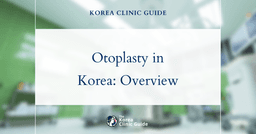Hyperhidrosis Surgery
Description
Hyperhidrosis surgery, also known as Endoscopic Thoracic Sympathectomy (ETS), is a medical procedure designed to treat severe cases of hyperhidrosis, where patients experience excessive sweating, typically under the armpits, on the palms, or on the face. The surgery involves making small incisions in the patient’s chest through which a tiny camera, known as an endoscope, and surgical instruments are inserted. The surgeon locates the sympathetic nerves responsible for excessive sweating and carefully cuts, clips, or destroys these nerves to interrupt the signals that cause hyperhidrosis. ETS is usually performed under general anesthesia, ensuring that the patient is unconscious and free of pain during the procedure. Post-surgery, patients are usually monitored for a few hours in a recovery room. They may experience temporary side effects such as pain in the chest area, difficulty breathing, or compensatory sweating where other parts of the body produce more sweat to compensate for the areas that have been treated. Most patients can return to normal activities within a week, although strenuous activities should be avoided for a few weeks. The success rate of ETS is generally high, with many patients experiencing significant or complete reduction in excessive sweating. However, it is important for patients to discuss potential risks and complications with their surgeon before undergoing the procedure.
Search
Categories
Related Posts




Top Hyperhidrosis Surgery Clinics
Louis Clinic
Pangyo Station
Free consultation from the clinic
Louis Clinic in Pangyo specializes in a range of aesthetic and dermatological treatments. Face Contouring Contour Injection: This procedure refines facial contours by reducing localized fat deposits, giving the face a slimmer appearance. Cheekbone Reduction Injection: Specifically targets and reduces cheekbone prominence for a more balanced facial structure. Face Lifting Ultra V Lifting: Utilizes PDO threads to stimulate collagen production, lifting and tightening sagging skin. Power V Lifting: Uses advanced thread techniques to provide a stronger lift and more defined V-line face shape. Petit Aesthetic Procedures Botox: Reduces the appearance of fine lines and wrinkles by temporarily paralyzing muscles. Filler: Adds volume to facial features such as lips, cheeks, and under-eye areas for a more youthful look. Permanent Makeup: Involves the application of pigment into the skin to enhance features like eyebrows, eyeliner, and lips. Acne and Skin Treatments Acne Treatment: Includes topical medications, oral medications, and specialized facials to manage and reduce acne. Scar Treatment: Uses laser therapy and microneedling to diminish the appearance of acne scars and improve skin texture. Whitening Laser: Lightens hyperpigmentation and evens out skin tone for a brighter complexion. Tattoo Removal: Employs laser technology to break down tattoo pigments safely and effectively. Hair Loss Solutions Hair Loss Consultation: Provides a thorough evaluation and personalized treatment plan for various types of hair loss. All-Kill Hair Loss Project: A comprehensive program combining multiple therapies to combat hair loss and promote hair regrowth. Obesity Counseling Body Contouring Injections: Targets and reduces fat in specific areas for a more contoured body shape. Weight Management Consultations: Offers personalized diet and exercise plans to help patients achieve their weight loss goals. Visit Louis Clinic in Pangyo for expert care and personalized treatment plans to meet your aesthetic needs.
learn more
TJ Plastic Surgery (TJ성형외과)
Sinsa Station
Free consultation from the clinic
TJ Plastic Surgery in Sinsa offers a variety of specialized procedures designed to enhance and rejuvenate various aspects of the face and body. Below is a categorized list of procedures with brief explanations. Oculoplasty Double Eyelid Surgery: Creates a natural-looking double eyelid fold, enhancing the appearance of the eyes. This procedure can help make the eyes appear bigger and more youthful. Eye Correction Surgery: Adjusts the position and structure of the eyes for improved function and aesthetics. Suitable for correcting asymmetry or ptosis. Canthoplasty: Modifies the outer corner (canthus) of the eye, altering its shape and size. This can create a more elongated and attractive eye shape. Revisional Double Eyelid Surgery: Corrects or enhances the results of previous double eyelid surgery. Ideal for individuals who are dissatisfied with their initial results or experience complications. Swollen Eye Plastic Surgery: Targets puffy eyes to create a smoother and firmer appearance. Often involves the removal of excess fat and skin. Middle-aged Eye Surgery: Focuses on addressing age-related changes around the eyes, such as drooping eyelids and wrinkles. Aimed at providing a more alert and youthful look. Micro Fat Grafting under the eyes: Involves the transfer of micro amounts of fat to the under-eye area, addressing hollowness and dark circles. This minimally invasive procedure offers a natural solution for rejuvenation. Rhinoplasty Nose Surgery: Comprehensive reshaping of the nose, addressing cosmetic and functional concerns. Includes adjustments to the bridge, tip, and nostrils. Nose Tip Surgery: Specifically reshapes and refines the tip of the nose for improved symmetry and contour. Can address issues such as a bulbous or drooping tip. Hooked Nose Surgery: Corrects a hooked or prominent nose, creating a straighter profile. Ideal for those looking to soften their facial features. Short Nose Extension/Upturned Nose Correction: Enhances the projection and length of a short nose or corrects an overly upturned nose. Aimed at achieving a balanced and proportionate look. Long Nose Surgery: Reduces the length of an overly long nose, harmonizing facial proportions. May involve alterations to the bridge and tip. Surgery of the Nostril: Alters the size and shape of the nostrils for a more harmonious nasal appearance. Useful for correcting flared or asymmetrical nostrils. Deviated Nose Correction: Straightens a deviated nasal septum, improving both aesthetics and breathing function. Beneficial for those with congenital or injury-induced deviations. Wide Nose Shaping: Narrows a wide nose, enhancing facial symmetry. Focuses on reducing the width of the bridge and nostrils. Revisional Nose Surgery: Addresses issues from previous rhinoplasty procedures. Provides corrections or enhancements to achieve desired results. Forehead Surgery Forehead Lifting: Elevates the skin and underlying tissues of the forehead to reduce wrinkles and sagging. Creates a more youthful and rested appearance. Hairline Lowering: Moves the hairline lower on the forehead to reduce the appearance of a high forehead. Suitable for those seeking to balance facial proportions. Forehead Augmentation: Involves adding volume to the forehead using implants or fat grafting, creating a fuller and smoother contour. Ideal for individuals with a flat or concave forehead. Anti-aging / Lifting Forehead Lifting: Similar to forehead lifting surgery, this procedure reduces wrinkles and sagging in the forehead area. TJ Thread Lifting: Uses special threads to lift and tighten the facial skin without invasive surgery. Provides a subtle, rejuvenated look with minimal downtime. Face Lifting: Comprehensive surgical procedure to lift and firm the skin of the face and neck. Reduces sagging, wrinkles, and other signs of aging. Premium Petit: Non-invasive anti-aging treatment using injectables and other advanced techniques to smooth wrinkles and restore volume. Suitable for those looking for a quick and effective rejuvenation without surgery. Fat Transplantation Fat Grafting: Transfers fat from one part of the body to areas needing volume, such as the face or hands. Provides a natural and long-lasting filling effect. Micro Fat Grafting under the eyes: Similar to under-eye fat grafting, addressing dark circles and hollowness. Hand Dorsum Micro Fat Grafting: Rejuvenates the backs of the hands by restoring lost volume and reducing the appearance of veins and tendons. Offers a more youthful hand appearance. Harvestjet: A specialized technique for harvesting and reinjecting fat cells, often used for face and body contouring. Facial Contouring Square Jaw Reduction: Reduces the width of the lower jaw for a more oval or V-line face shape. Commonly sought by individuals desiring a softer jawline. Zygoma Reduction: Reshapes and reduces the prominence of the cheekbones for a more balanced facial profile. Suitable for those with overly prominent cheekbones. Short Chin Implant: Enhances the projection of a short or recessed chin using implants. Helps achieve better facial proportions. Protruding Chin Correction: Reduces the prominence of a chin that juts out, creating a more harmonious profile. Often involves bone reduction or repositioning. V-line Genioplasty: Refines the shape of the chin and jawline to create a V-shaped face. Popular for achieving a sleek and contoured appearance. Breast Plastic Surgery Micro Texture: Uses specially textured implants for breast augmentation, providing a natural look and feel. Reduces the risk of complications such as capsular contracture. Sagging Breast Plastic Surgery: Corrects and lifts sagging breasts, often with the addition of implants or a breast lift. Aimed at restoring a youthful breast contour. Breast Reduction Surgery: Reduces the size of overly large breasts, alleviating discomfort and improving proportions. Involves the removal of excess breast tissue and skin. Body Contouring Liposuction: Removes excess fat deposits from areas such as the abdomen, thighs, and arms. Helps sculpt and refine body contours. Hip-up Plastic Surgery: Enhances the shape and lift of the buttocks, often using implants or fat grafting. Creates a more rounded and lifted appearance. Other Plastic Surgery Ear Keloid Plastic Surgery: Treats keloid scars on the ears, improving appearance and reducing discomfort. May involve excision and steroid injections. Osmidrosis Axillae Surgery: Addresses excessive underarm sweating through the removal of sweat glands or other techniques. Provides a permanent solution for hyperhidrosis. Patients can view before-and-after photos to see the results of various procedures and make informed decisions about their treatments.
learn more


